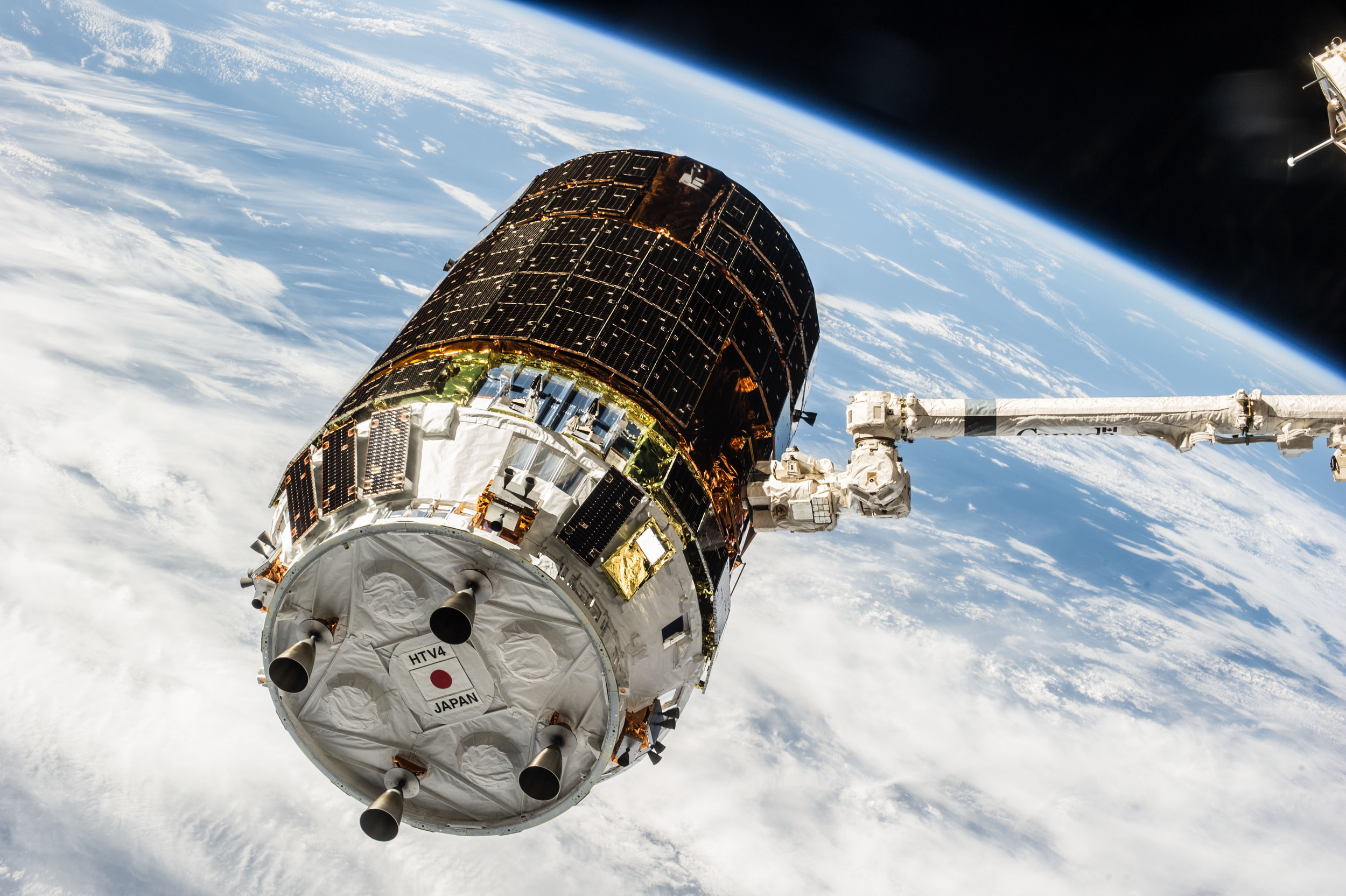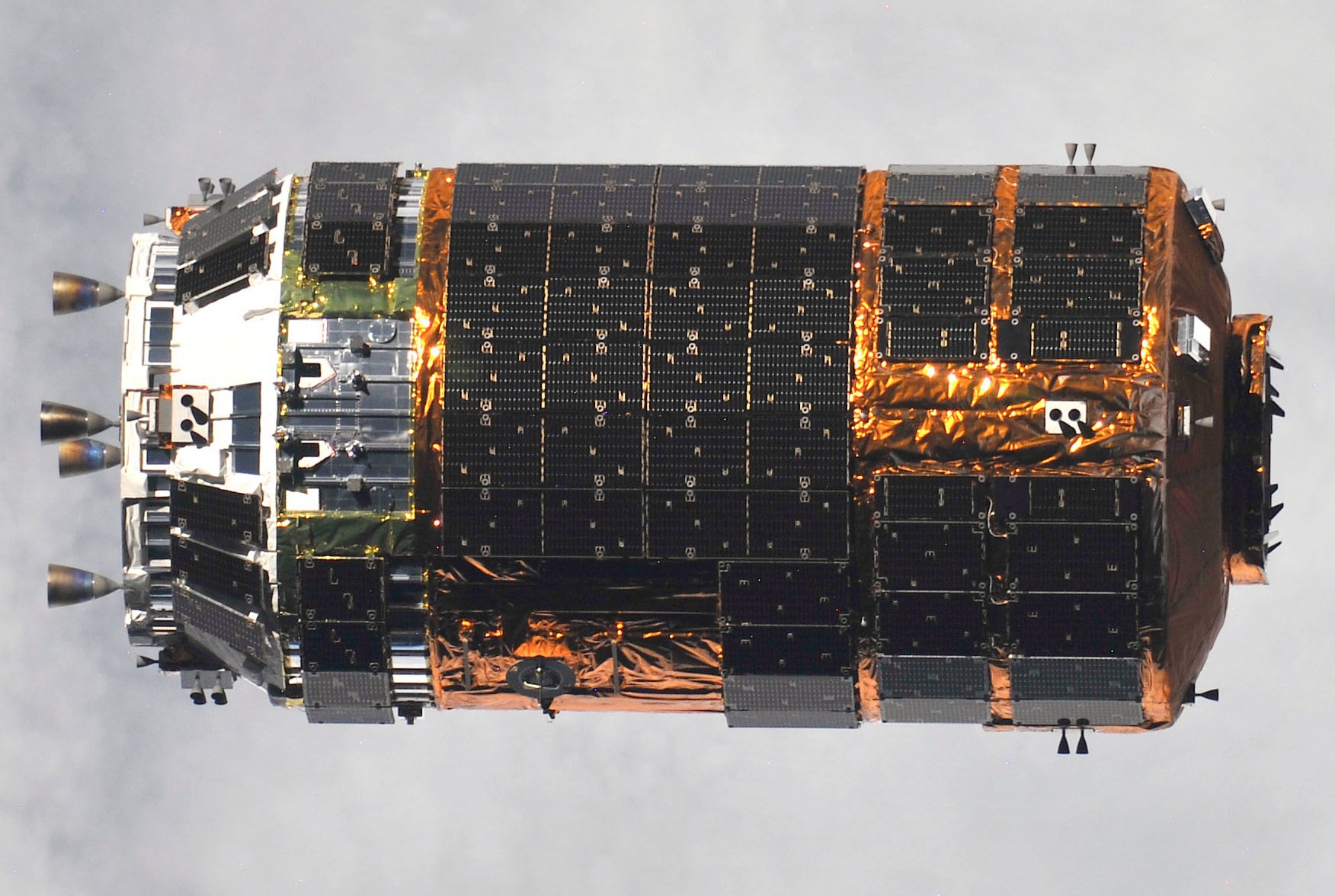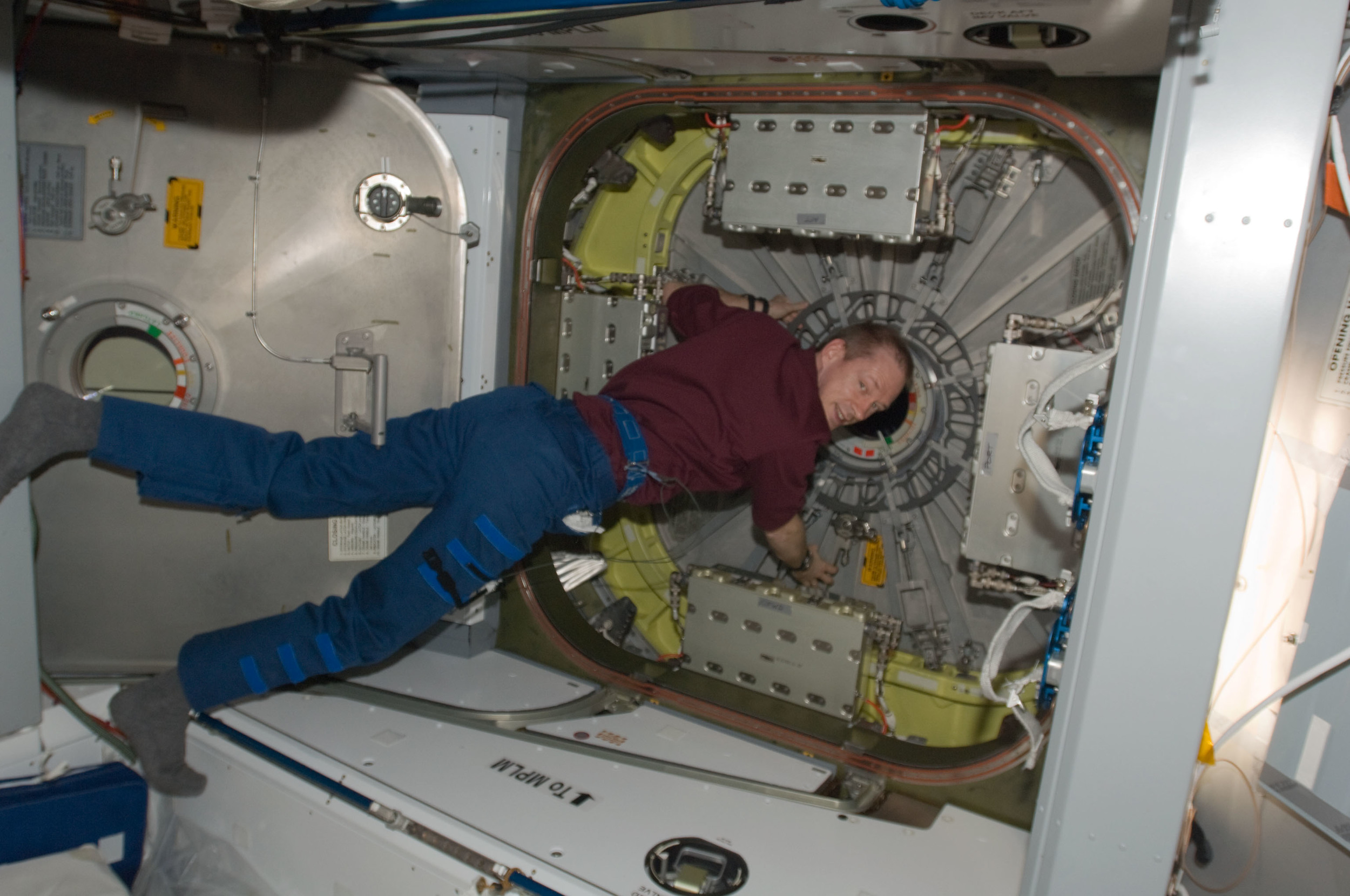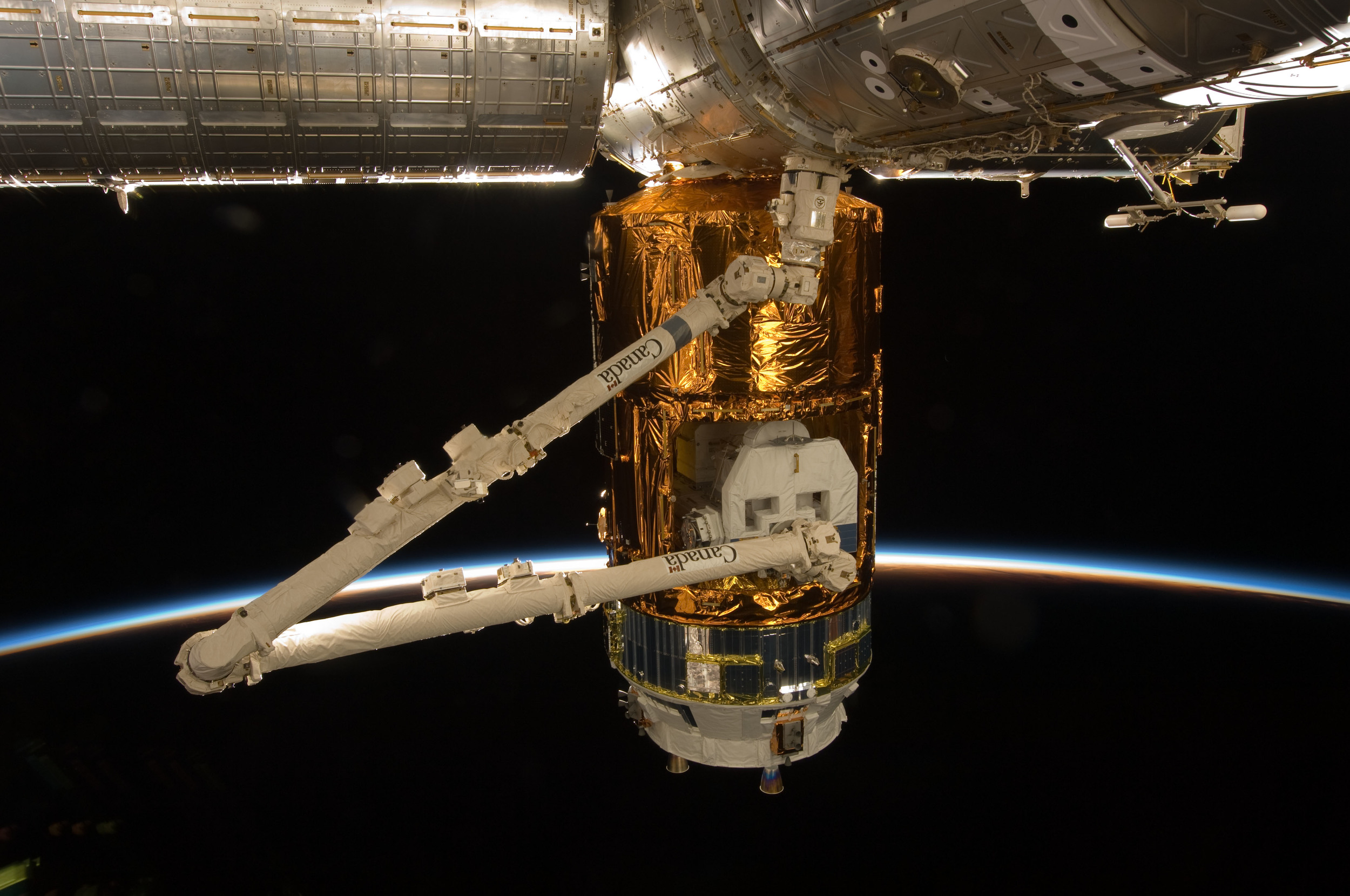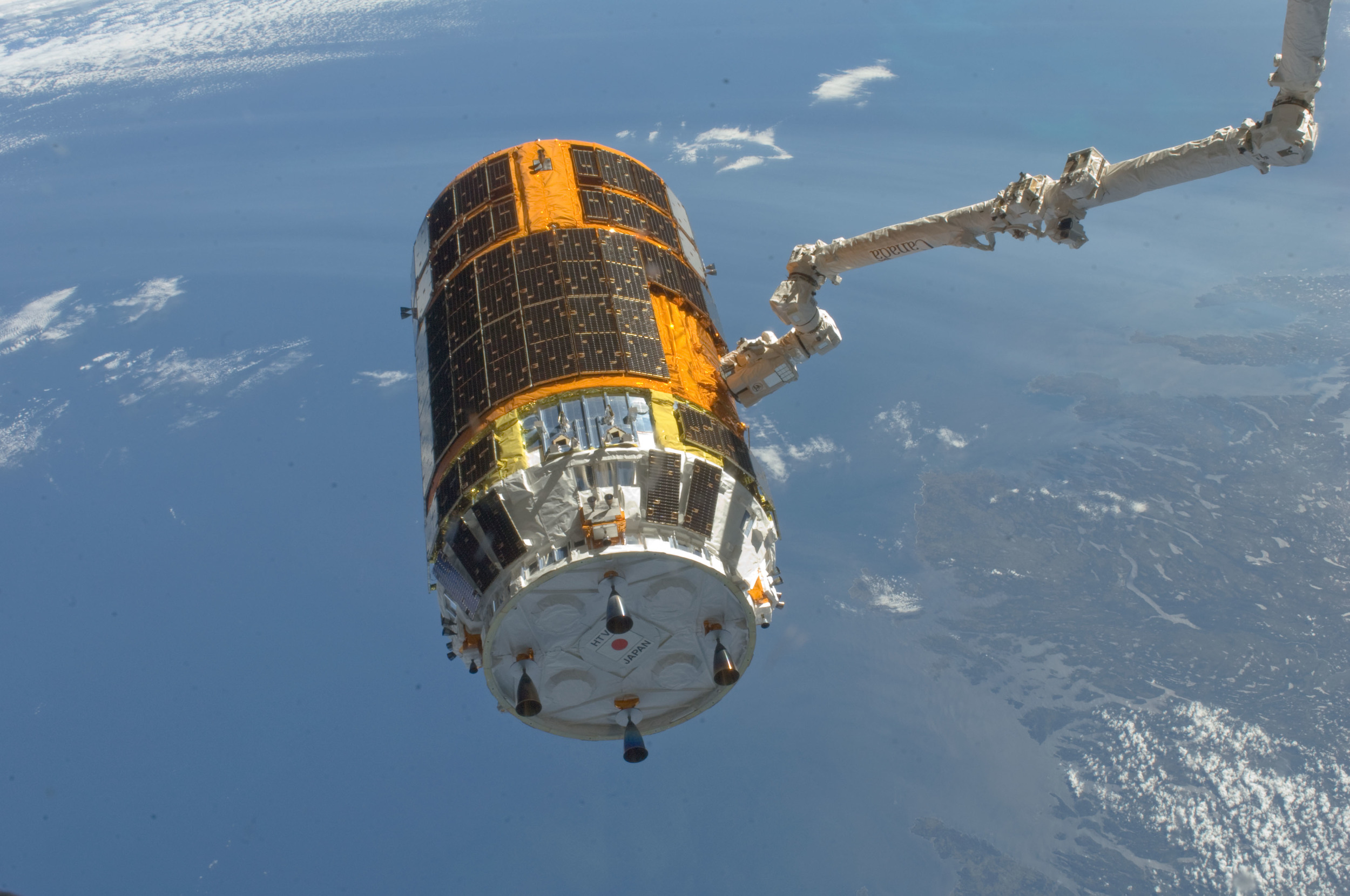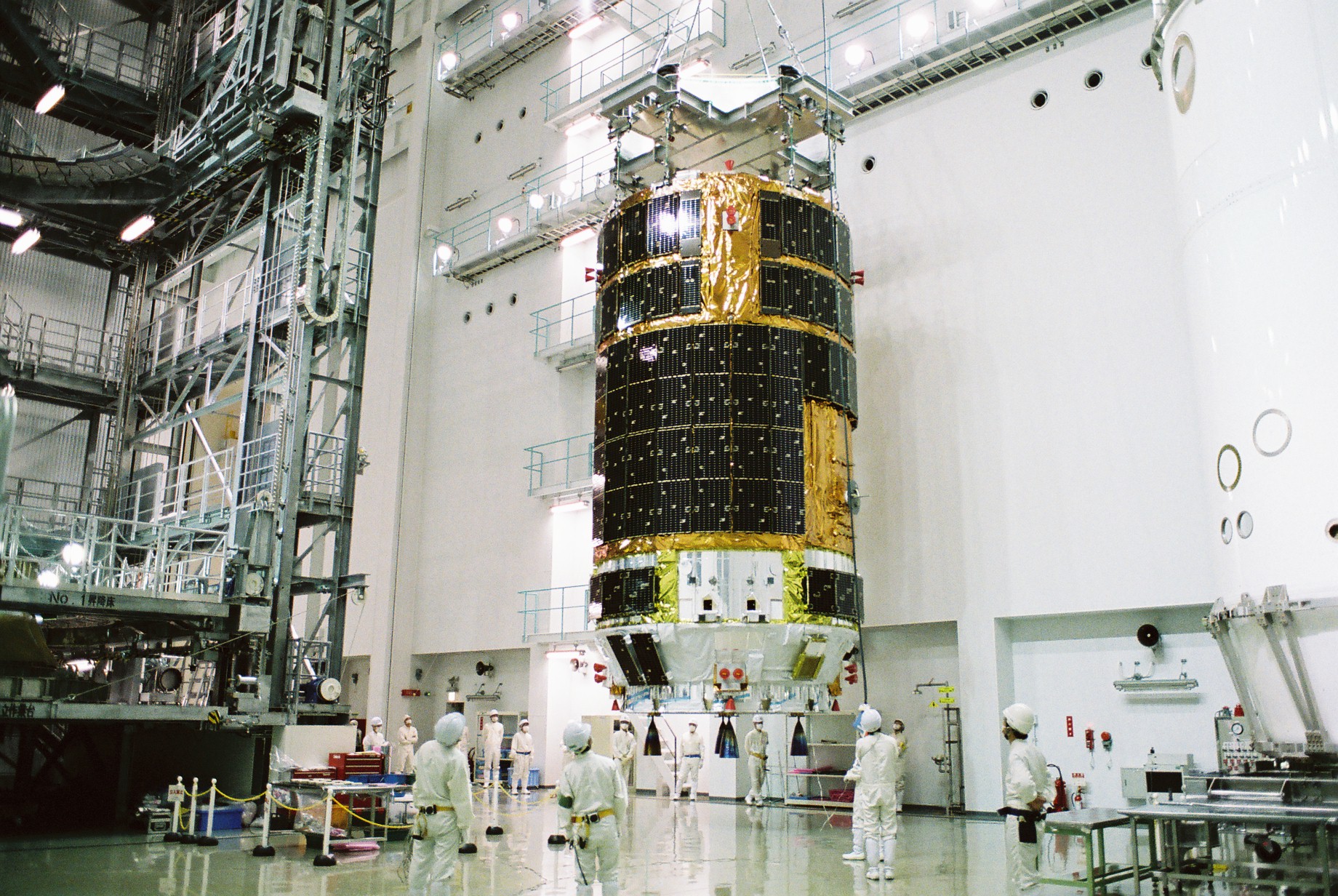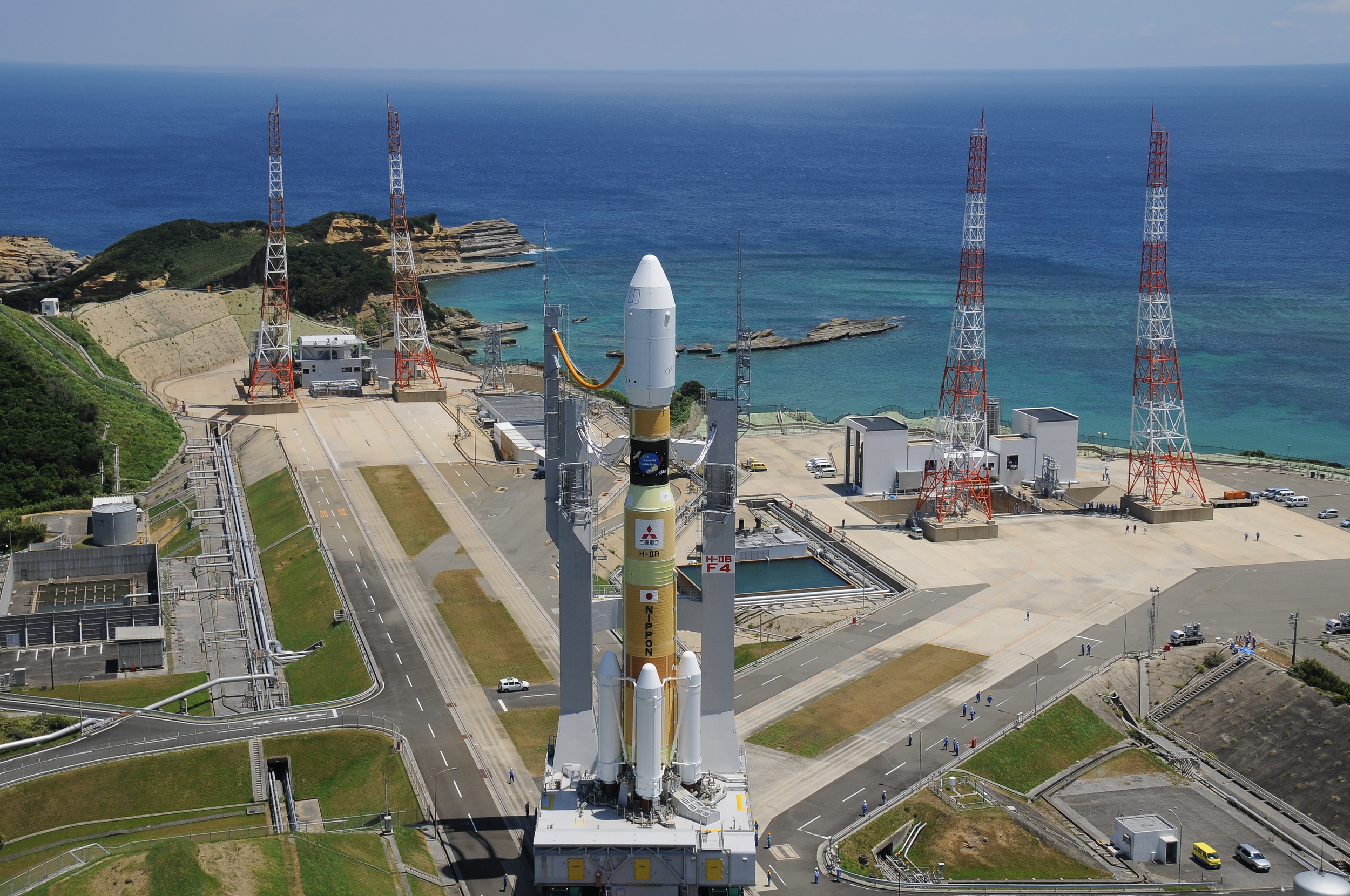Japan sends cargo to the International Space Station
The H-II Transfer Vehicle, also called Kounotori, is how Japan sends cargo to the International Space Station. It is the only cargo ship that can carry large International Standard Payload Racks—the standard rack size on the outpost.
The Japan Aerospace Exploration Agency started working on the design of the spacecraft in the early 1990s before finally flying the first vehicle in 2009. JAXA launches a Kounotori about once a year atop the country's H-IIB rocket from Tanegashima Space Center in Japan.
It carries more than twice the cargo that the Russian Progress, however, it launches less than twice as often.
When Kounotori gets close to the station, it is grabbed by the space station's 17.6-meter-long robotic Canadarm2 and is typically berthed to the Earth-facing port of the outpost's Harmony module.
Upon completion of its mission, it is loaded with trash, unberthed and sent into a destructive reentry over the Pacific Ocean.
— Quick facts —
Basics
Country: Japan
Operator: JAXA
Manufacturer: Mitsubishi Heavy Industries, Ltd.
Launch site: Tanegashima Space Center, Japan
Launch vehicle: H-2B
Reusable: No
Name meaning: White stork
Specifications
Spacecraft mass: 10,500 kg
Height: 9.8 m
Width: 4.4 m
Max. cargo: ~6,200 kg
Return payload: None
Orbital life: About 2 months
Flight history
First flight: HTV-1, Sept. 10, 2009
Number flown: 9
Failures: 0
Stations serviced: ISS
Successor: HTV-X, NET 2022
Status: Retired
— Sections —
Pressurized Logistics Carrier
Width: 4.4 m
Height: 3.3 m
Max. Cargo: 5,200 kg
Volume: 14 m³
While visually one big spacecraft, Kounotori is actually composed of four parts. The forward-most piece is called the Pressurized Logistics Carrier. Like its name sounds, it contains pressurized cargo. At the front of this section is a common berthing mechanism, which allows the vehicle to be attached to the ISS.
Inside, there are eight International Standard Payload Rack bays that can be unloaded by expedition crews in a shirt-sleeve environment. The racks are arranged in two groups of four and each group has a rack on each of the four walls. The forward four are located near the hatch of the PLM while the other four are located in the rear.
The four in the front are able to hold either an ISPR or fixed HTV Resupply Rack while the rear four only contain fixed HRRs.
ISPRs can be detached and moved onto the ISS if needed while the HRRs must stay inside the cargo ship.
Unpressurized Logistics Carrier
Width: 4.4 m
Height: 3.5 m
Max. Cargo: 1,500 kg
The Unpressurized Logistics Carrier primarily holds the Exposed Pallet, which carries external experiments and orbital replacement units for the space station.
The EP is secured to the spacecraft during launch by four tie-down separation mechanisms. Additionally, once the robotic Canadarm2 grabs onto the power and data grapple fixture attached to the EP, three rails help guide the pallet in and out of the ULM.
The robotic arm, after removing the EP, moves it to the Exposed Facility on the Kibo module complex.
In addition to some solar panels on the PLM, the ULM also has solar panels; between the two, there are 57. This section also has a power and data grapple fixture to allow for Canadarm2 to "grab" on to it and attach the cargo ship to the space station.
Avionics Module
Width: 4.4 m
Height: 1.2 m
This section contains the computers, batteries, guidance and electrical power subsystems of the cargo ship. Kounotori uses GPS, rendezvous sensors and Earth sensors to detect where it is relative to the space station.
There are a couple different types of batteries in this section. There are 11 non-rechargeable primary batteries as well as a single secondary battery that can be recharged.
This secondary battery powers the spacecraft during orbital night and charged during orbital day by the cargo ship's many solar panels.
The non-rechargeable are uses when the secondary doesn't have sufficient power. Additionally, while the spacecraft is berthed to the space station, a power control unit routes power from the outposts solar arrays.
Propulsion Module
Propellant Mass: ~2,400 kg
Width: 4.4 m
Height: 1.8 m
Sporting four main thrusters, the Propulsion Module is used for major orbital maneuvers like orbit changes.
The four engines consume monomethylhyrazine as a fuel mixed with oxides of nitrogen as an oxidizer. These are located in four helium-pressurized tanks holding up 2,400 kilograms of propellant.
When these fuels combine in the engines, each produce 490 newtons of thrust.
Additionally, there are a total of 28 attitude control thrusters situated around the four sections. Each provides 110 newtons of thrust.
— Launch timeline —
The Kounotori launches atop an H-IIB rocket (also designed and built by Mitsubishi Heavy Industries) from the Yoshinobu Launch Complex at the Tanegashima Space Center. The facility is located on the southern end of Tanegashima Island, which is about 115 kilometers south of Kyushu, the southernmost of the four main islands of Japan.
At 56.6 meters tall, the launch vehicle has two stages and employs four strap on solid rocket motors for the first two minutes of its ascent into orbit. The first stage is powered by two LE-7A engines and consume a liquid hydrogen and liquid oxygen fuel mixture. The second stage is powered by a single LE-5B engine that also consumes liquid hydrogen and liquid oxygen.
Over the weeks and months before the planned launch, the rocket is assembled vertically in a vehicle assembly building, culminating with the attachment of the payload-fairing-encapsulated Kounotori spacecraft at the top of the stack.
About 13.5 hours before liftoff, the H-IIB is rolled out to the launch pad, located less than 500 meters from the assembly building. The trip takes about 30 minutes.
Once the vehicle arrives at the pad, crews begin connecting propellant, power and data interfaces. Once completed, a poll is conducted around 10 hours, 40 minutes before liftoff to ensure all is ready for the fueling process to start.
A 400-meter safety zone is implemented about 10 minutes later as pad technicians begin the process of configuring the vehicle to receive fuel.
Between T-minus 8 hours and T-minus 7 hours, 45 minutes, the pad is evacuated and a 3,000-meter safety zone is implemented.
Fueling finally begins about 7.5 hours before launch. This process, which also includes conditioning parts of the vehicle to receive the cryogenic fluids, takes about three hours. During that time, checks of the vehicles attitude control system, communications equipment and other critical areas of the rocket are performed.
Once fueling is complete, propellent replenishment begins. Additionally, final vehicle checks start around T-minus 4 hours.
At T-minus 1 hour, 10 minutes, a poll to enter the terminal count is performed by members of a nearby launch control center. The terminal count starts an hour before liftoff.
For the next 50 minutes, things are relatively quiet as controllers monitor the health of the vehicle. Ten minutes before liftoff, controllers are polled to enter the automated countdown sequence, which starts at T-minus 4.5 minutes.
Eight minutes before flight, the Kounotori spacecraft is switched to internal power. At 4.5 minutes, propellent replenishment stops. Those fuel tanks are pressurized 10 seconds later.
Three minutes before liftoff, the H-IIB rocket switches to internal power. At two minutes, the launch range and weather is verified ready and acceptable for launch.
Within 73 seconds before liftoff, a quick succession of events occur. The sound suppression system is activated first. At one minute, the flight termination system (which is used if the vehicle veers off course) activates. Guidance systems switch to flight mode at 18 seconds. Ten seconds before flight, residual hydrogen is burned off by pyrotechnics. And finally, about 5.2 seconds before T-minus zero, the two LE-7A engines ignite and begin throttling to full power.
Once the countdown reaches zero, the four boosters ignite and the launch mount releases the vehicle to rise skyward.
After liftoff, the vehicle rises vertically for a short while before pitching over toward the southeast over the Pacific Ocean to line up for the 51.6-degree orbital inclination of the International Space Station.
The four solid boosters burn for about 114 seconds before consuming its fuel. They are dropped away about 10 seconds later, leaving the first stage and its two LE-7A engines to continue doing its part in the ascent.
Some 3 minutes, 45 seconds into flight, the payload fairing falls away. Because the rocket is high enough out of the atmosphere at this point, the protective shell is no longer needed.
Just shy of six minutes into flight, the first stage consumes its fuel and the engines cut off. About 8 seconds later, the first and second stages separate with the latter’s lone LE-5B igniting 10 seconds after that to continue ascending toward orbit.
Fourteen minutes after leaving Japan, the rocket and Kounotori reach orbit. The spacecraft is separated about 50 seconds later to start communicating with NASA's Tracking and Data Relay Satellite System and begin its chase of the ISS.
— Orbital mission —
Rendezvous timeline
Over several days the spacecraft is commanded to refine its orbit and catch up with the International Space Station. Like many spacecraft, it approaches the outpost from beneath the station, relative to Earth.
Using an “R-bar” approach method, meaning along the station’s radial vector, the Kounotori slowly increases its altitude. As it does this, the spacecraft begins to fall slightly behind the ISS, requiring thruster firings to speed the craft up slightly. Should a thruster fail, the cargo ship would naturally move away from the target. As such, this “natural breaking effect” doubles as a safety feature.
The ISS will be able to directly communicate with Kounotori once it reaches the "proximity communication zone" at around 23 kilometers away. The spacecraft will also establish communications with the Proximity Communication System, known as PROX, on the Japanese Kibo module at the outpost.
Using PROX and GPS signals, Kounotori will continue approaching the ISS until it is about 5 kilometers behind the complex—an area known as the “approach initiation point.” The spacecraft will then gradually moves itself to a position just 500 meters below the space station—the “rendezvous insertion point”—using an onboard laser guidance system and reflectors on the outpost.
From there, the spacecraft gradually close the distance from the ISS at speeds ranging from 1 to 10 meters per minute. At about 300 meters below the ISS, Kounotori holds and rotates 180 degrees to turn its front section toward the vehicles velocity vector.
After ground controllers verify the health of the spacecraft, it begins rising toward the outpost again, this time holding at 30 meters below the ISS. This final point allows for a check of Kounotori’s alignment before proceeding further.
Should anything go wrong during the approach, the station’s expedition crew can manually transmit a hold, retreat or abort signal to call off the approach.
If all is nominal and the spacecraft is healthy, the Kounotori is commanded to approach to a position just 10 meters below the Destiny module of the ISS. From there, the crew uses the 17.6-meter-long Canadarm2 to robotically capture the spacecraft.
Over several hours, ground teams will then remotely command the arm to move the cargo ship to a common berthing mechanism on the U.S. side of the station to berth the vehicle. For Kounotori, that location is usually the Earth-facing port of Harmony.
Berthed mission and departure
After securely attached to the ISS, the vestibule between the hatches of Kounotori and ISS is pressurized. Once leak checks are performed, the hatches are open for crews to begin the process of unloading the cargo.
Kounotori stays attached to the ISS for about two months, typically. During that time, cargo is unloaded from the pressurized carrier and any external equipment is removed from the unpressurized carrier using Canadarm2.
When the mission is complete, the hatches are closed and the vestibule depressurized. Canadarm2 is use to unberth Kounotori and move it to the same location that it originally captured the vehicle -- about 10 meters below Destiny.
Departing the ISS is done so in a similar fashion as arrival, albeit a bit simpler. Thrusters slowly push the vehicle downward and away from the complex before a series of engine burns safely moves Kounotori more than 500 meters.
From there, Kounotori has several options. It can continue to gradually move away from the ISS over several hours before performing a deorbit burn to burn up over the Pacific Ocean, or it can be commanded to remain in orbit on a secondary free-flight mission for several days to several weeks to allow for experiments to be robotically performed.
Eventually, each Kounotori’s fate is a destructive reentry over the Pacific Ocean. It isn’t designed to be recovered and any pieces that survive the breakup will safely fall into the water.
— Development —
JAXA, then the National space Development Agency of Japan, began developing what would become Kounotori in the early 1990s. It was supposed to launch in 2001, but like many space projects, design and production delays pushed the first flight to September 2009.
After the first flight, it was named Kounotori, which means white stork in Japanese, because “a white stork carries an image of conveying an important thing (a baby, happiness, and other joyful things), therefore, it precisely expresses the HTV's mission to transport essential materials to the ISS.”
The spacecraft is designed to service the ISS and bring supplies and experiments not only for all of the international partner nations on the space station project, but also to the Japanese-owned Kibo module.
Kounotori is also used to offset its share of the cost of operating the ISS, including the cost of launching the three main parts of Kibo aboard three separate space shuttle missions in 2008 and 2009.
Originally, seven Kounotori spacecraft were planned. But with the extension of ISS operations from 2016 to 2020 to 2024, two more vehicles were added to the manifest. To further help offset cost, JAXA is developing the HTV-X successor, which is currently anticipated to debut no earlier than 2021.


